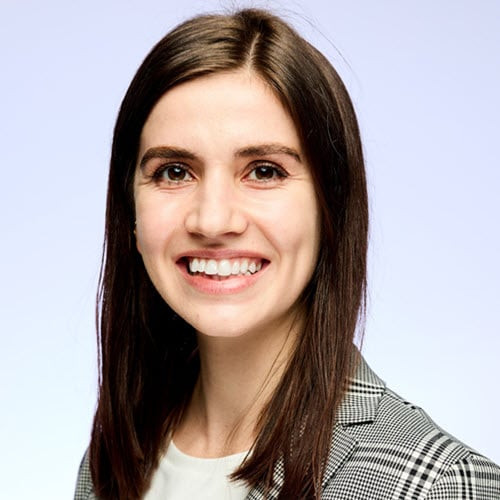Physician Assistants (PAs) and Medical Doctors (MDs/DOs) are both essential healthcare providers, yet they navigate distinct educational paths, training durations, and scopes of practice. While both are dedicated to patient care, understanding the nuanced differences between a Physician Assistant versus a Doctor is crucial for aspiring medical professionals and patients alike. This article will delve into a comprehensive comparison, exploring their education, responsibilities, lifestyle, and more, to clarify the unique roles each plays in the medical field.
What are the Core Differences Between a PA and an MD?
The fundamental divergence between a Physician Assistant and a Medical Doctor lies in their educational journey, which subsequently shapes their autonomy and breadth of practice. Medical Doctors undertake an extensive and rigorous educational pathway, encompassing medical school and residency, culminating in the full licensure to independently diagnose, treat, and prescribe medications. This comprehensive training typically spans over a decade after high school. Conversely, a PA completes a focused master’s-level program, generally lasting two to three years, and operates under the supervision of an MD or DO. The degree of autonomy for a PA can fluctuate based on state regulations and the supervising physician’s preferences. Although PAs are adept at performing numerous tasks akin to those of MDs, such as patient examinations and medication prescriptions, these actions are typically executed within a collaborative practice framework under physician oversight.
Education Pathways: PA vs MD
The educational trajectories for Physician Assistants and Medical Doctors diverge significantly in length, depth, and specialization. Generally, aspiring PAs embark on a medical training path that is approximately five years shorter than that of their MD counterparts. Consequently, the breadth and depth of medical knowledge acquired by PAs, while comprehensive, are not as extensive as the rigorous curriculum of medical school.
Duration: PA programs typically require the completion of a master’s degree program spanning approximately 2-3 years, subsequent to obtaining a bachelor’s degree. In contrast, MD education necessitates four years of medical school following a bachelor’s degree, further extended by 3-7 years of residency training, contingent upon the chosen medical specialty. In totality, PA education usually encompasses around 6-7 years post-high school, whereas MD education stretches to approximately 11-15 years.
Curriculum and Depth:
-
PA programs are meticulously designed to be intensive, concentrating on delivering practical medical training within a condensed timeframe. The curriculum is robust, featuring courses in medical sciences, clinical medicine, and patient-centered care. PA students engage in approximately 2,000 hours of clinical rotations across core medical disciplines, including family medicine, internal medicine, pediatrics, surgery, and emergency medicine. This targeted training equips them to deliver patient care effectively under physician supervision across diverse healthcare settings.
-
MD education, conversely, adopts a broader and significantly more in-depth approach. It is structured into two primary phases: pre-clinical and clinical education. The pre-clinical phase, generally the initial two years of medical school, involves demanding coursework in foundational sciences such as anatomy, biochemistry, pathology, physiology, and pharmacology. The clinical phase, typically the latter two years of medical school, immerses students in extensive hands-on patient care experiences across various specialties within a hospital environment. Following medical school, MD and DO graduates progress into residency programs where they undergo specialized training and assume escalating patient care responsibilities, refining their expertise within their chosen field.
Clinical Training: While PA students undertake clinical rotations in hospital settings, mirroring the experiences of medical students, these rotations are typically shorter in duration. Medical students, however, benefit from considerably more extensive clinical training, enabling them to cultivate a deeper and more nuanced understanding of a wide spectrum of medical conditions and treatment modalities.
Scope and Autonomy: PAs are educated to function collaboratively with physicians, often fulfilling a supportive role within medical teams. Their education underscores the development of practical skills vital for immediate patient care needs. Medical Doctors, in contrast, are trained to practice autonomously, navigate complex medical decision-making scenarios, and specialize in specific medical domains, capabilities that are honed through their prolonged and comprehensive training.
Summary: PA education is characterized by its shorter duration and sharper focus on practical skills tailored for immediate patient care delivery. Education for Medical Doctors is more protracted, comprehensive, and geared towards preparing physicians for independent practice and specialized medical expertise.
 Physician Assistant consulting with patient, illustrating the practical clinical training in PA programs
Physician Assistant consulting with patient, illustrating the practical clinical training in PA programs
Lifestyle Comparison: PA vs MD
Generally, Physician Assistants often experience a more balanced lifestyle compared to Medical Doctors. This advantage stems from their less extensive and intensive educational path, which enables them to enter the workforce sooner and typically with less educational debt. PAs often benefit from more predictable work schedules, fewer on-call responsibilities, and reduced administrative burdens, fostering a more conducive work-life balance. In contrast, Medical Doctors undertake a more prolonged and demanding training regimen, including medical school and residency, which commonly leads to extended work hours, frequent on-call duties, and significant administrative responsibilities. While physicians typically command higher salaries and possess greater autonomy in patient care decisions, their demanding schedules and protracted years of education and training can contribute to a more challenging work-life balance.
Pros and Cons: Choosing Your Path
Choosing to become a physician presents several significant advantages, including a high degree of autonomy in medical practice, the opportunity to specialize in diverse fields of medicine, and the potential for higher earnings. MDs and DOs possess comprehensive training that empowers them to diagnose intricate medical conditions, perform surgical procedures, and lead medical teams effectively. This extensive preparation cultivates profound medical expertise and establishes doctors as leaders within the healthcare sector, opening avenues for involvement in research, education, and healthcare policy development. The prestige associated with the medical profession and the profound capacity to positively impact patient outcomes can be deeply rewarding.
However, the path to becoming a Medical Doctor also presents notable drawbacks. The journey is lengthy and rigorous, demanding four years of medical school followed by 3-7 years of residency training. This extended education period results in substantial financial debt and a prolonged timeframe before entering the workforce and beginning to earn. The demanding nature of the profession often entails long hours, frequent on-call duties, and elevated levels of stress, which can impact work-life balance and personal well-being. Conversely, pursuing a career as a Physician Assistant (PA) involves a shorter educational path, typically around 2-3 years of master’s-level training post-bachelor’s degree. PAs can enter the workforce more rapidly, accumulate less debt, and often enjoy more predictable work hours and a better work-life balance. However, PAs operate under the supervision of physicians, which inherently limits their autonomy, and their earning potential is generally lower than that of MDs. Despite these limitations, PAs fulfill a crucial role in healthcare delivery, providing essential medical services and enhancing patient access to care, which can also be profoundly fulfilling.
PA vs MD in Primary Care
Primary care services can be effectively delivered by both Physicians and PAs. In fact, many patients may not discern a difference when consulting their primary care provider (PCP). Both MDs and PAs are expertly trained to diagnose and manage a broad spectrum of medical conditions, oversee chronic illnesses, and deliver preventive care. However, MDs possess more extensive training, encompassing medical school and residency, which can provide them with a deeper comprehension of complex medical issues and equip them to manage more intricate medical cases. PAs, who undergo a more focused and shorter training program, practice under physician supervision and may need to consult with or refer to their supervising physicians for more complex medical scenarios. Nevertheless, PAs are highly capable of managing the majority of primary care needs effectively, often providing more accessible and cost-effective healthcare delivery.
Salary Expectations: Physician Assistant vs Medical Doctor
It’s important to acknowledge that various factors can influence salary levels for both physicians and physician assistants. These encompass experience, geographical location, and medical specialty. Generally, physicians earn more than physician assistants, reflecting the greater length and depth of their training. According to the U.S. Bureau of Labor Statistics, the average annual salary for a PA is approximately $121,530. Entry-level PAs typically earn less, around $76,700 per year, while those with one to four years of experience earn about $95,730 annually. As PAs accumulate more experience, their salaries increase notably, with those having 20 or more years of experience earning an average of $162,470 per year.
Physicians command significantly higher salaries than PAs, commensurate with their extended duration and intensity of training. According to the Medscape Physician Compensation Report 2024, the average physician salary in the United States is approximately $352,000 per year. Primary care physicians earn an average of $265,000, while specialists can earn substantially more, with some, like orthopedic surgeons, earning around $605,000 annually.
What Can an MD Do That a PA Cannot?
Medical Doctors are authorized to perform several medical interventions and assume responsibilities that are beyond the scope of Physician Assistants, primarily due to differences in their training depth and legal stipulations. MDs and DOs have the authority to practice independently, make complex and critical medical decisions autonomously, and perform a broader spectrum of surgical procedures without direct supervision. Furthermore, physicians can pursue specialization in diverse medical fields, which necessitates additional years of residency and fellowship training, enabling them to manage more complex, severe, and nuanced medical cases. While PAs are highly proficient in performing numerous clinical tasks and delivering excellent patient care, they are required to work under the supervision of an MD and their scope of practice is defined by state regulations and the directives of their supervising physicians. However, it’s noteworthy that several states in the US currently permit PAs to practice with greater autonomy, and in some cases, without mandated supervision.
 Physician and Physician Assistant collaborating on patient care, highlighting the team-based approach in healthcare
Physician and Physician Assistant collaborating on patient care, highlighting the team-based approach in healthcare
Is PA Better Than MD?
The determination of whether a Physician Assistant career path is “better” than that of a Medical Doctor is inherently subjective and hinges on individual career aspirations, personal interests, and life priorities. PAs typically benefit from a shorter educational pathway and often experience more predictable work hours and an improved work-life balance. They function under the supervision of Medical Doctors and are capable of providing a wide array of medical care services, rendering them invaluable members of healthcare teams. Conversely, Medical Doctors undertake more extensive and rigorous training, encompassing medical school and residency, which empowers them to practice independently, specialize deeply within specific medical domains, perform surgeries, and assume leadership roles within healthcare settings. The ultimate choice between a PA and MD career trajectory is contingent upon an individual’s desired level of professional autonomy, the depth of medical knowledge they aspire to acquire, their long-term career aspirations, and personal preferences regarding work-life equilibrium.
Can a PA Become an MD?
Yes, a Physician Assistant can indeed transition to becoming a Medical Doctor. This transition necessitates completing additional education, including any required premedical coursework, attending medical school for four years, successfully completing residency training in a chosen specialty, obtaining a medical license, and potentially achieving board certification in their specialty. This pathway demands significant dedication, a substantial time commitment, and rigorous adherence to the academic and clinical requirements of medical school and residency programs. However, it presents PAs with the opportunity to practice medicine independently, specialize deeply in a chosen field, and pursue leadership positions within healthcare organizations. While PAs may enter this process with a more robust medical background than a typical medical school applicant, they are still required to complete the full medical education pathway alongside all other premedical students.
Is a PA Still Called Doctor?
No, a Physician Assistant is not typically addressed as “doctor.” Although PAs hold a master’s degree and are licensed healthcare providers who are qualified to diagnose illnesses, formulate treatment plans, and prescribe medications under the supervision of a physician, they do not possess a doctoral degree. Instead, they are commonly and appropriately addressed as Physician Assistant, PA, or often simply by their first name in clinical settings, fostering a collaborative and patient-centered environment.
Getting Started in Medicine
Now that you have a clearer understanding of the distinctions and similarities between Physician Assistants and Medical Doctors, you may be leaning towards pursuing the path of becoming an MD. If this resonates with you, and you aspire to attend a distinguished medical school, consider exploring institutions like UMHS. Please visit our FAQ page for more detailed information about our programs. To begin your application to our accredited medical school, please follow this link: https://www.umhs-sk.org/apply
Popular and related articles:
| .jpg) | MD versus DO |
|---|---|
 Surgical procedures performed by a General Surgeon, a specialized medical doctor Surgical procedures performed by a General Surgeon, a specialized medical doctor |
Becoming a General Surgeon |
 Campus of Caribbean Medical School, an option for pursuing medical education Campus of Caribbean Medical School, an option for pursuing medical education |
Caribbean Medical Schools FAQs |
 Callie Torres, resident physician and author, expert in healthcare and medical writing
Callie Torres, resident physician and author, expert in healthcare and medical writing
Posted by Callie Torres
Callie Torres is a resident physician working at a top tier institute in the Midwest. She is a freelance health and medical writer as well as an author of many peer reviewed medical articles. She additionally serves as a Captain in the United States Air Force.

